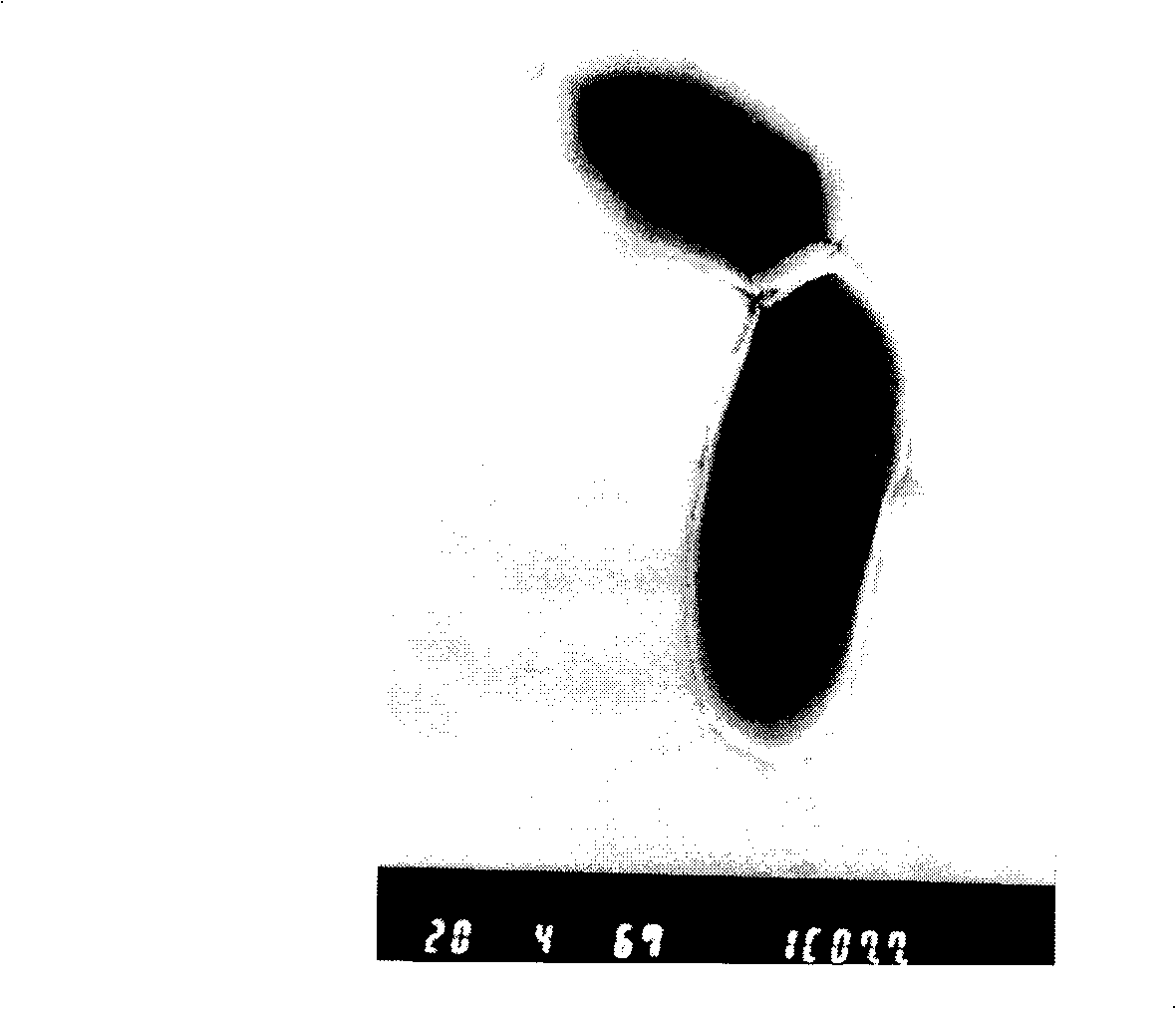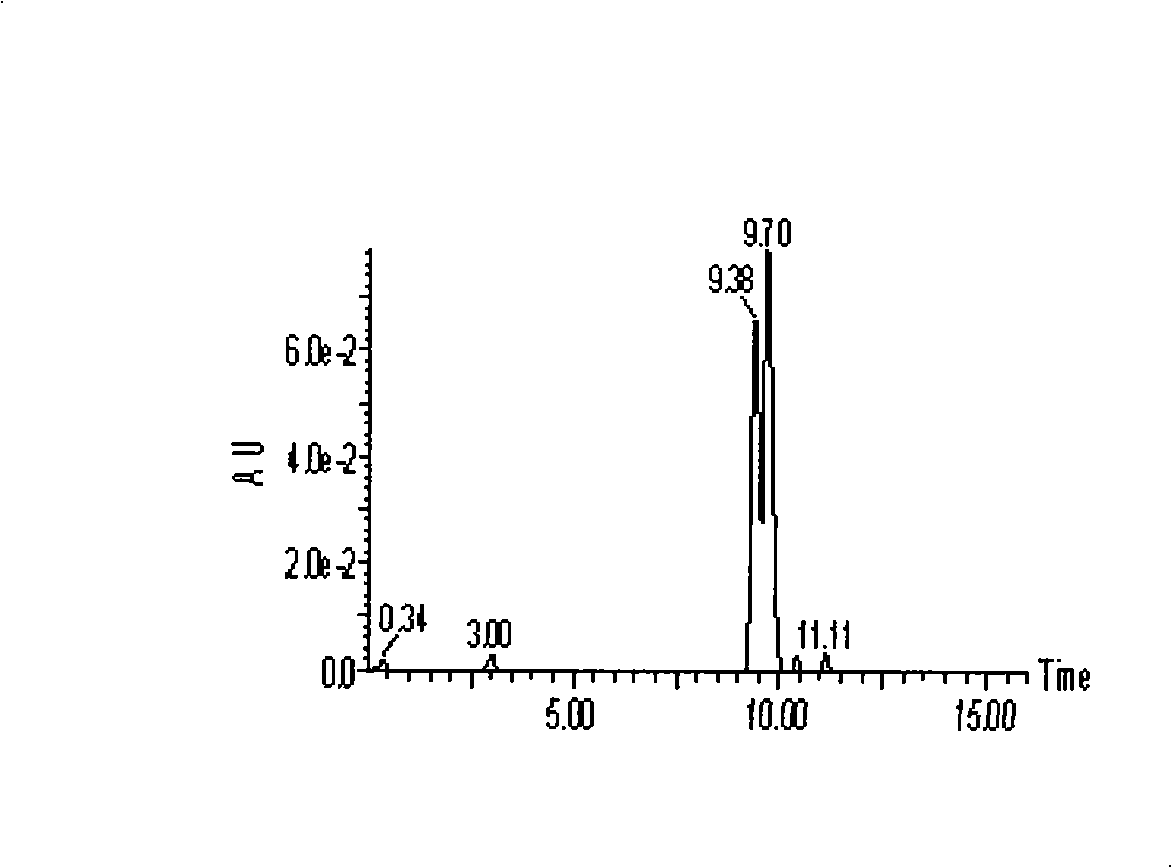Bacterial strain for microbial transformation phytosterin as yield per unit androstane diene diketone
A technology for androstadiene dione and phytosterol is applied in the field of fermentation in bioengineering, which can solve the problems of high cost, low yield, difficult industrial production and the like, and achieves that the conversion rate does not decrease, the product purity is high, and the conversion rate is high. Effect
- Summary
- Abstract
- Description
- Claims
- Application Information
AI Technical Summary
Problems solved by technology
Method used
Image
Examples
Embodiment 1
[0035] Example 1: Effective transformation of phytosterols into androstenedione and androstenedione strain screening
[0036] Soil samples collected near an oil refinery in Bengbu, weighing 10g soil samples and 100mL triangular flask with glass beads, shake well and break up, let stand for 2h, take supernatant and filter, absorb a small amount of clear liquid and phytosterol as the only carbon Phytosterol-converting bacteria were enriched in the source liquid culture medium (plus Istatin). Take a little enrichment solution and spread it properly on the solid medium with phytosterol as the only carbon source for culture. Pick 200 well-growing single colonies and save them on a slant.
[0037] Medium composition: CH 3 COONH 4 1.5g, MgSO 4 ·7H 2 O 0.2g, K 2 HPO 4 0.4g, KH 2 PO 4 0.8g, FeSO 4 ·7H 2 O 5mg, ZnSO 4 ·7H 2 O 2 mg, MnCl 2 4H 2 O 0.5 mg.
[0038] Substrates: stigmasterol 28.70%, β-sitosterol 42.26%, campesterol 24.48%, other sterols 4.56%.
[0039] The...
Embodiment 2
[0040] Embodiment 2: Ultraviolet mutagenesis screening of a single-producing androstadienedione strain
[0041] Using the strain obtained in Example 1 as the starting strain, formulate its growth curve and ultraviolet lethality curve, after mutagenesis, dilute it in an appropriate gradient and spread it in a solid medium with phytosterol as the only carbon source in a dark room for 48 hours. Pick a single colony clone from a plate with a large difference in the growth status of the colony and inoculate it into three solid media of SM1 (SM+phytosterol), SM2 (SM+AD), and SM3 (SM+ADD), and culture it at 30°C for 48h. initial screening. Select the colonies that grow well on SM1 and SM2, and do not grow or grow slowly on SM3 for re-screening in shake flask fermentation, and select the strains with improved conversion rate and increased proportion of ADD products. The colony was identified as Bacillus sp ST06-95.
Embodiment 3
[0042] Embodiment 3: the research of the transformation ability of mutant strain
[0043] The bacterial strain ST06-95 obtained by screening in Example 2 was cultivated for 48h on solid medium (beef extract 0.3, peptone 0.5, NaCl 1.5, agar 2.0, pH 7.0), and then transferred to seed medium (beef extract 0.3, peptone 1.0 , NaCl 1.5, glycerol 1.5, yeast extract 0.3, pH 7.0) for 45 hours, and inoculated in the fermentation medium (phytosterol 0.8, glucose 1, citric acid 0.2, glycerin 0.25, ferrous ammonium citrate 0.05, K 2 HPO 4 0.05, MgSO 4 0.05, (NH 4 ) 2 HPO 4 1.0, Tween80 0.3, pH 7.0) and fermented for 7 days. The fermentation broth was extracted with ethyl acetate, and the content of AD and ADD in the solution was analyzed by HPLC. Such as image 3 As shown, the peak time corresponding to the standard sample AD is 9.7 min, and the peak time corresponding to the standard sample ADD is 11.1 min. After the strains after mutagenesis are fermented, the AD content in the...
PUM
 Login to View More
Login to View More Abstract
Description
Claims
Application Information
 Login to View More
Login to View More - R&D
- Intellectual Property
- Life Sciences
- Materials
- Tech Scout
- Unparalleled Data Quality
- Higher Quality Content
- 60% Fewer Hallucinations
Browse by: Latest US Patents, China's latest patents, Technical Efficacy Thesaurus, Application Domain, Technology Topic, Popular Technical Reports.
© 2025 PatSnap. All rights reserved.Legal|Privacy policy|Modern Slavery Act Transparency Statement|Sitemap|About US| Contact US: help@patsnap.com



